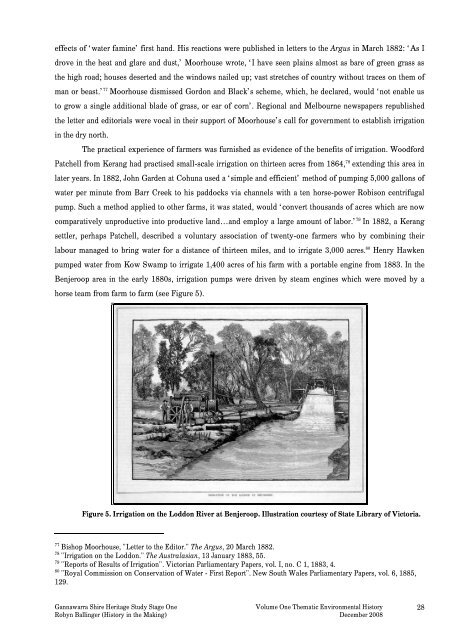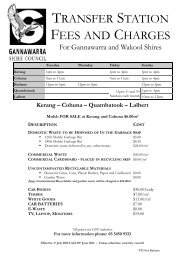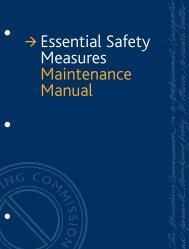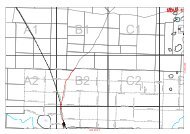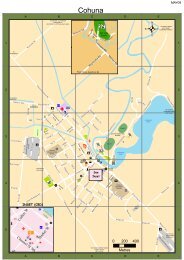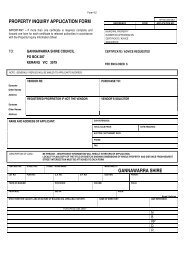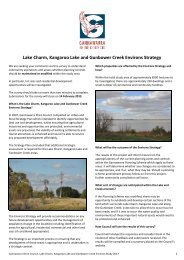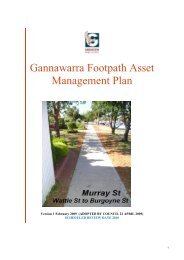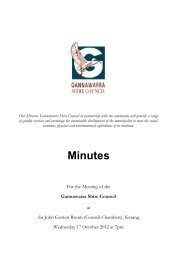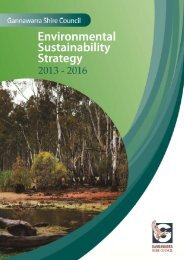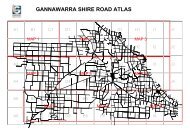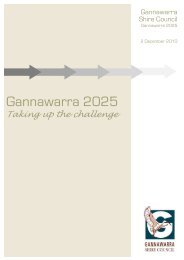Gannawarra Shire Heritage Study Stage One Volume One Thematic ...
Gannawarra Shire Heritage Study Stage One Volume One Thematic ...
Gannawarra Shire Heritage Study Stage One Volume One Thematic ...
You also want an ePaper? Increase the reach of your titles
YUMPU automatically turns print PDFs into web optimized ePapers that Google loves.
effects of ‘water famine’ first hand. His reactions were published in letters to the Argus in March 1882: ‘As I<br />
drove in the heat and glare and dust,’ Moorhouse wrote, ‘I have seen plains almost as bare of green grass as<br />
the high road; houses deserted and the windows nailed up; vast stretches of country without traces on them of<br />
man or beast.’ 77 Moorhouse dismissed Gordon and Black’s scheme, which, he declared, would ‘not enable us<br />
to grow a single additional blade of grass, or ear of corn’. Regional and Melbourne newspapers republished<br />
the letter and editorials were vocal in their support of Moorhouse’s call for government to establish irrigation<br />
in the dry north.<br />
The practical experience of farmers was furnished as evidence of the benefits of irrigation. Woodford<br />
Patchell from Kerang had practised small-scale irrigation on thirteen acres from 1864, 78 extending this area in<br />
later years. In 1882, John Garden at Cohuna used a ‘simple and efficient’ method of pumping 5,000 gallons of<br />
water per minute from Barr Creek to his paddocks via channels with a ten horse-power Robison centrifugal<br />
pump. Such a method applied to other farms, it was stated, would ‘convert thousands of acres which are now<br />
comparatively unproductive into productive land…and employ a large amount of labor.’ 79 In 1882, a Kerang<br />
settler, perhaps Patchell, described a voluntary association of twenty-one farmers who by combining their<br />
labour managed to bring water for a distance of thirteen miles, and to irrigate 3,000 acres. 80 Henry Hawken<br />
pumped water from Kow Swamp to irrigate 1,400 acres of his farm with a portable engine from 1883. In the<br />
Benjeroop area in the early 1880s, irrigation pumps were driven by steam engines which were moved by a<br />
horse team from farm to farm (see Figure 5).<br />
Figure 5. Irrigation on the Loddon River at Benjeroop. Illustration courtesy of State Library of Victoria.<br />
77 Bishop Moorhouse, "Letter to the Editor." The Argus, 20 March 1882.<br />
78 "Irrigation on the Loddon." The Australasian, 13 January 1883, 55.<br />
79 "Reports of Results of Irrigation". Victorian Parliamentary Papers, vol. I, no. C 1, 1883, 4.<br />
80 "Royal Commission on Conservation of Water - First Report". New South Wales Parliamentary Papers, vol. 6, 1885,<br />
129.<br />
<strong>Gannawarra</strong> <strong>Shire</strong> <strong>Heritage</strong> <strong>Study</strong> <strong>Stage</strong> <strong>One</strong> <strong>Volume</strong> <strong>One</strong> <strong>Thematic</strong> Environmental History<br />
Robyn Ballinger (History in the Making) December 2008<br />
28


